By Jim Caple
 The most beautiful baseball cards you'll ever see don't come in an aluminum foil or wax paper wrapper. They aren't stained by a stale plank of unchewable gum. And they are so drop-dead gorgeous you would never, ever, under any circumstance consider sticking them to your bicycle spokes.
The most beautiful baseball cards you'll ever see don't come in an aluminum foil or wax paper wrapper. They aren't stained by a stale plank of unchewable gum. And they are so drop-dead gorgeous you would never, ever, under any circumstance consider sticking them to your bicycle spokes.
Not that you could anyway. Because the most beautiful baseball cards you'll ever see are online at Gary Cieradkowski's website, infinitecardset.blogspot.com. But hold off clicking on that link until you finish this column because chances are once you go there, you won't be leaving for quite a while. (I'm only thinking of your employment.)
For now, just take a look at a couple of the cards you'll find there.
Cieradkowski, 41, is a superb graphic artist and illustrator -- he designed the clock at Camden Yards, along with the ballpark's seat logos while he was in college -- and he's been creating the cards on his blog since his father died in the fall of 2009. His father had passed on his baseball passion to Gary, who fondly recalls the ongoing trivia contest between the two.
"He would call up and not even say 'hello' first, just start right in with the trivia question," Cieradkowski said. "We would try to drag up baseball players the other had never heard of. My father passed away suddenly two years ago from an aneurysm. We talked three or four times a week, maybe more, talking about baseball. Dad died at the end of September and when spring training came along a couple months later I suddenly realized I didn't have anyone to talk baseball with."
So he began the blog, regularly drawing brilliant new card after brilliant new card. "It's a tribute to my father. I just wanted to do something with the characters I had read about. And I started doing these baseball-card illustrations.
"I think of my dad every time I do one. I know this will sound really hokey, but it's my way of still talking to him and having him around. I'll think, 'Dad would like this guy,' or think that it would be a player he told me about, and how it would be nice to have him see the drawing."
Cieradkowski collected baseball cards when he was growing up in the '70s and '80s in New Jersey, rooting for the Mets and hating the Yankees. And just like so many others, he stuck the cards in his bicycle spokes to produce a whirring sound. "That's where all the Cubs and Yankees cards went!"
"I would buy new cards and then trade for the old ones," Cieradkowski said. "Guys with the Brooklyn Dodgers. They were grandfather's team and those uniforms were just neater looking. Every once in a while I could trade for a Goudy card from the 1930s. I was always really drawn to those older ones. It wasn't someone just taking a photo, it was someone who took the time to draw the player."
Cieradkowski's cards (and especially his posters) bear a wonderful similarity to the old WPA art style during the Great Depression. There also is a hint of Toulouse-Lautrec's strong lines and poster work. His artwork is able to capture the player far better than the photos you find in a typical baseball card. These players are more alive, more real than any faded photo. I almost expect them to leap off the card and demand $50 in exchange for an autograph.
There are famous players in Cieradkowski's set -- Joe DiMaggio, Willie Mays, Mickey Mantle, Satchel Paige -- but what sets it apart are the lesser known players with the compelling backstories. Cieradkowski loves to pour through baseball books and old newspapers, researching players from the past. He then writes up stories for the "back" of his cards on such players as Farmer Dean, a minor league hopeful on the West Coast who ate two steaks for breakfast each morning and wore overalls with a sign on the back declaring "I am Farmer Dean."
Farmer Dean would have thrived in the world of social media and reality shows but, alas, he never reached the majors. Nor did another pitching hopeful who has a card in the ever-expanding set:
Castro isn't the only person in the set more famous for something other than baseball. George H.W. Bush is here, as is beat writer Jack Kerouac (who created his own very involved fantasy baseball game). It didn't matter how or where you played, whether the majors, minors, Negro leagues or Japan -- if you have an interesting story, Cieradkowski has a card.
You don't even have to be a real person. Sam Malone has a card. As does Roy Hobbs. And this guy:
Many of the players in the infinitecardset never had a baseball card. Thanks to Cieradkowski, they now have some of the best.
OK, now you can go to the link. Just don't tell your boss I sent you there.
You know the drill. Each week I provide a fragment from an old box score and challenge you to determine what game it is from and why it's significant. I give this one a difficulty rating of 8.0. Answer below.
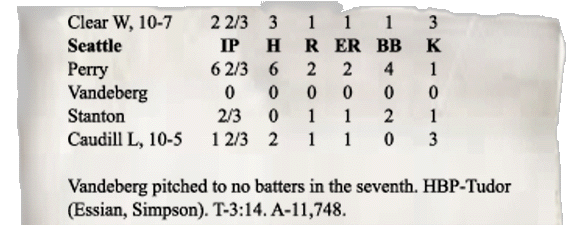 Kurt Snibbe/ESPN.com
Kurt Snibbe/ESPN.com
Who knew Joe Torre ever had so much hair! Topps ran a series of cards in its 1972 set that showed childhood photos of a few players. Jim Fregosi was shown holding an accordion. Jim Palmer was shown with an inflatable tube in a swimming pool. Tom Seaver is shown in a youth ball uniform. And Torre (1972 Topps No. 341) is shown standing in front of the family car.
If Topps ran this feature today, we would have a shot of a seventh-grade Derek Jeter rubbing his hickey while handing a girl a small bouquet and an autographed baseball. Tim Lincecum getting turned away from a "Sorry Kids, You Must Be This High To Ride This" sign at an amusement park. An appalled restaurant owner watching Prince Fielder enter the Kids Eat Free buffet line.
And of course, Jamie Moyer chained to a loom in a garment district sweatshop.
Then Again, Ken Phelps For Jay Buhner Worked Out All Right: I completely understand the Mariners' need/desire to beef up their terrible offense, but I'm still not a big fan of the Michael Pineda-Jesus Montero trade. For one thing, it violates the cardinal rule of trading -- never, never, never, never, NEVER deal with the Yankees. The prospects they offer are almost always overhyped. Next, the Yankees are the strongest team in baseball. Helping them just hurts everyone's chances in the long term. If New York needs a player, let the Steinbrenners add him the old-fashioned way by signing him to an obscene contract that puts them in the luxury tax category.
I Mean, "The English Patient" Over "The Big Lebowski"?: The Golden Globes handle awards better than the Academy Awards by giving out Best Picture awards for both dramas and comedies. The Oscars are biased against comedies -- they almost never win Best Picture ("Some Like It Hot" never even got nominated). Laughing is strictly verboten by The Academy, which much prefers that an audience cry over a person battling cancer or struggling with mental retardation (or preferably both). It's like starting pitchers and the MVP. They aren't excluded from the MVP but the award usually goes to a position player. Justin Verlander ended a 25-year MVP drought for starters in 2011 and Golden Globe winner "The Artist" has a shot at snapping the Best Picture drought for comedies, though I wouldn't classify it as a true comedy, either. Depending on how you classify "Chicago" (musical comedy) and "Shakespeare in Love" (as much historical romance as comedy) only two "comedies" have won Best Picture since "Annie Hall" in 1977 (when "Star Wars" deserved it).
Which leads to my ever-present question for writers who do not vote for players they suspect used steroids: If it was all right to vote for Perry, an admitted spit-baller who cheated throughout his career by breaking a rule that had been specified in the book since the 1920s, why is not all right to vote for a player who might (or might not) have used a substance that was not against the rules?

Not that you could anyway. Because the most beautiful baseball cards you'll ever see are online at Gary Cieradkowski's website, infinitecardset.blogspot.com. But hold off clicking on that link until you finish this column because chances are once you go there, you won't be leaving for quite a while. (I'm only thinking of your employment.)
For now, just take a look at a couple of the cards you'll find there.
[+] Enlarge

Gary Cieradkowski
[+] Enlarge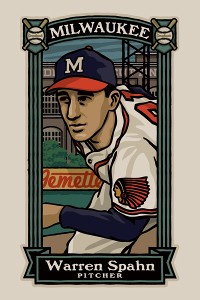

Gary Cieradkowski
"He would call up and not even say 'hello' first, just start right in with the trivia question," Cieradkowski said. "We would try to drag up baseball players the other had never heard of. My father passed away suddenly two years ago from an aneurysm. We talked three or four times a week, maybe more, talking about baseball. Dad died at the end of September and when spring training came along a couple months later I suddenly realized I didn't have anyone to talk baseball with."
So he began the blog, regularly drawing brilliant new card after brilliant new card. "It's a tribute to my father. I just wanted to do something with the characters I had read about. And I started doing these baseball-card illustrations.
"I think of my dad every time I do one. I know this will sound really hokey, but it's my way of still talking to him and having him around. I'll think, 'Dad would like this guy,' or think that it would be a player he told me about, and how it would be nice to have him see the drawing."
[+] Enlarge

Gary Cieradkowski
[+] Enlarge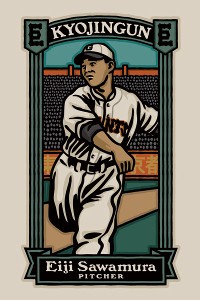

Gary Cieradkowski
"I would buy new cards and then trade for the old ones," Cieradkowski said. "Guys with the Brooklyn Dodgers. They were grandfather's team and those uniforms were just neater looking. Every once in a while I could trade for a Goudy card from the 1930s. I was always really drawn to those older ones. It wasn't someone just taking a photo, it was someone who took the time to draw the player."
[+] Enlarge

Gary Cieradkowski
There are famous players in Cieradkowski's set -- Joe DiMaggio, Willie Mays, Mickey Mantle, Satchel Paige -- but what sets it apart are the lesser known players with the compelling backstories. Cieradkowski loves to pour through baseball books and old newspapers, researching players from the past. He then writes up stories for the "back" of his cards on such players as Farmer Dean, a minor league hopeful on the West Coast who ate two steaks for breakfast each morning and wore overalls with a sign on the back declaring "I am Farmer Dean."
Farmer Dean would have thrived in the world of social media and reality shows but, alas, he never reached the majors. Nor did another pitching hopeful who has a card in the ever-expanding set:
[+] Enlarge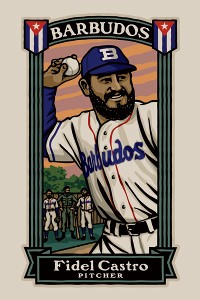

Gary Cieradkowski
You don't even have to be a real person. Sam Malone has a card. As does Roy Hobbs. And this guy:
Many of the players in the infinitecardset never had a baseball card. Thanks to Cieradkowski, they now have some of the best.
OK, now you can go to the link. Just don't tell your boss I sent you there.
CSI: Box Score
You know the drill. Each week I provide a fragment from an old box score and challenge you to determine what game it is from and why it's significant. I give this one a difficulty rating of 8.0. Answer below.
 Kurt Snibbe/ESPN.com
Kurt Snibbe/ESPN.comBaseball Card of the Week
Who knew Joe Torre ever had so much hair! Topps ran a series of cards in its 1972 set that showed childhood photos of a few players. Jim Fregosi was shown holding an accordion. Jim Palmer was shown with an inflatable tube in a swimming pool. Tom Seaver is shown in a youth ball uniform. And Torre (1972 Topps No. 341) is shown standing in front of the family car.
If Topps ran this feature today, we would have a shot of a seventh-grade Derek Jeter rubbing his hickey while handing a girl a small bouquet and an autographed baseball. Tim Lincecum getting turned away from a "Sorry Kids, You Must Be This High To Ride This" sign at an amusement park. An appalled restaurant owner watching Prince Fielder enter the Kids Eat Free buffet line.
And of course, Jamie Moyer chained to a loom in a garment district sweatshop.
Yeah, Well, That's Just Like Your Opinion, Man
Then Again, Ken Phelps For Jay Buhner Worked Out All Right: I completely understand the Mariners' need/desire to beef up their terrible offense, but I'm still not a big fan of the Michael Pineda-Jesus Montero trade. For one thing, it violates the cardinal rule of trading -- never, never, never, never, NEVER deal with the Yankees. The prospects they offer are almost always overhyped. Next, the Yankees are the strongest team in baseball. Helping them just hurts everyone's chances in the long term. If New York needs a player, let the Steinbrenners add him the old-fashioned way by signing him to an obscene contract that puts them in the luxury tax category.
I Mean, "The English Patient" Over "The Big Lebowski"?: The Golden Globes handle awards better than the Academy Awards by giving out Best Picture awards for both dramas and comedies. The Oscars are biased against comedies -- they almost never win Best Picture ("Some Like It Hot" never even got nominated). Laughing is strictly verboten by The Academy, which much prefers that an audience cry over a person battling cancer or struggling with mental retardation (or preferably both). It's like starting pitchers and the MVP. They aren't excluded from the MVP but the award usually goes to a position player. Justin Verlander ended a 25-year MVP drought for starters in 2011 and Golden Globe winner "The Artist" has a shot at snapping the Best Picture drought for comedies, though I wouldn't classify it as a true comedy, either. Depending on how you classify "Chicago" (musical comedy) and "Shakespeare in Love" (as much historical romance as comedy) only two "comedies" have won Best Picture since "Annie Hall" in 1977 (when "Star Wars" deserved it).
Answer -- CSI: Box Score
The clues here are the names of Perry and Vandeberg in the Seattle box score, with the note that Vandeberg pitched to no batters in the seventh. Well, that's officially true because Mariners reliever Ed Vandeberg took over in mid-batter, threw ball four and the walk was charged to Gaylord Perry. But why did he relieve Perry midway through an at-bat? Because umpire Dave Phillips ejected Gaylord Perry for throwing a spitball, the first time Perry had ever been ejected for a spitter in his 22-year career.Which leads to my ever-present question for writers who do not vote for players they suspect used steroids: If it was all right to vote for Perry, an admitted spit-baller who cheated throughout his career by breaking a rule that had been specified in the book since the 1920s, why is not all right to vote for a player who might (or might not) have used a substance that was not against the rules?

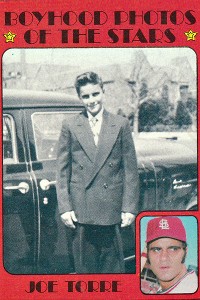





No comments:
Post a Comment